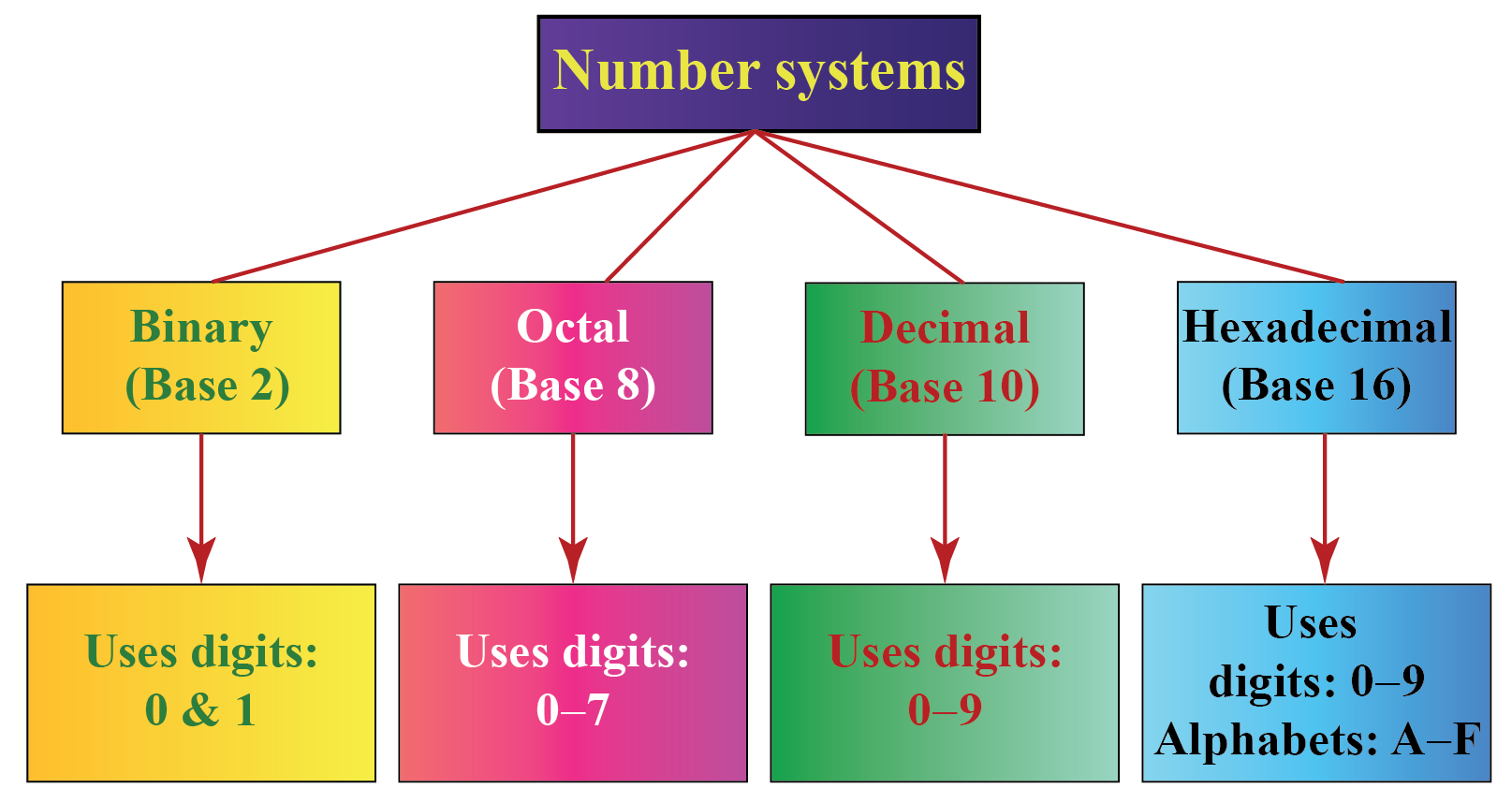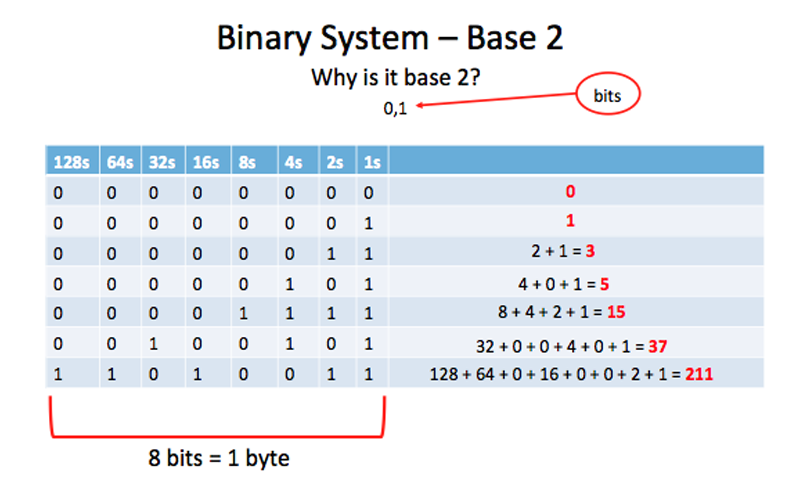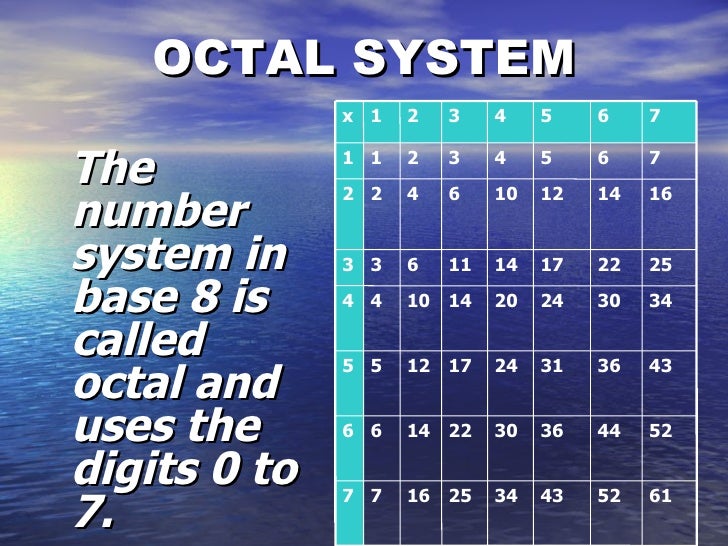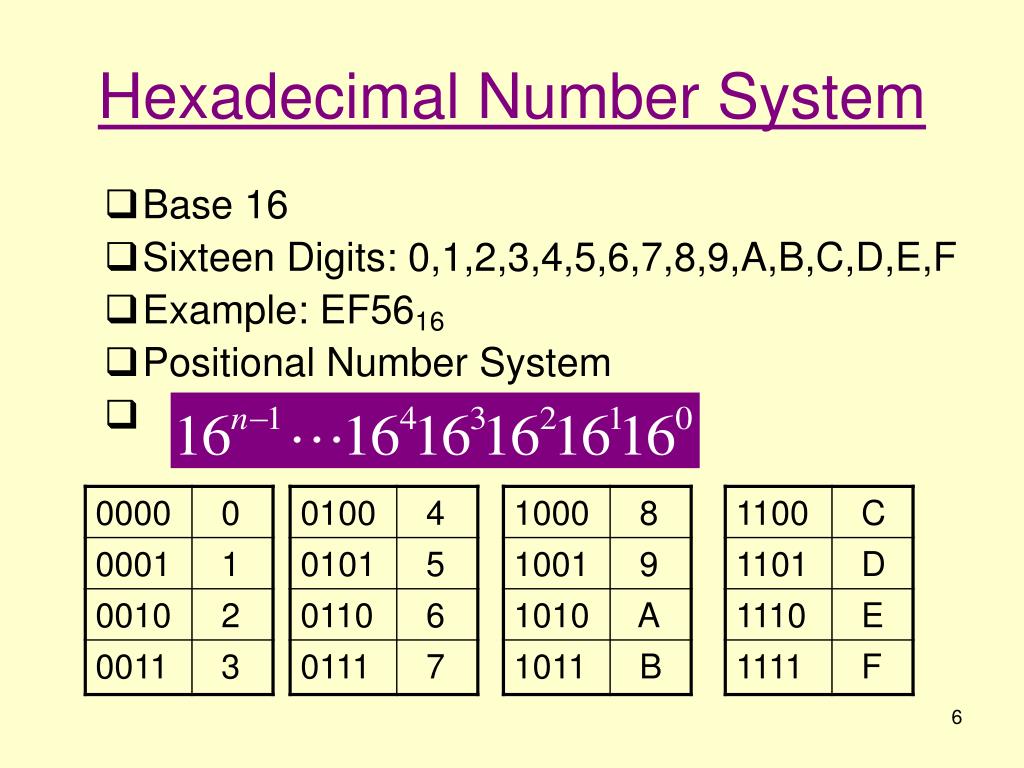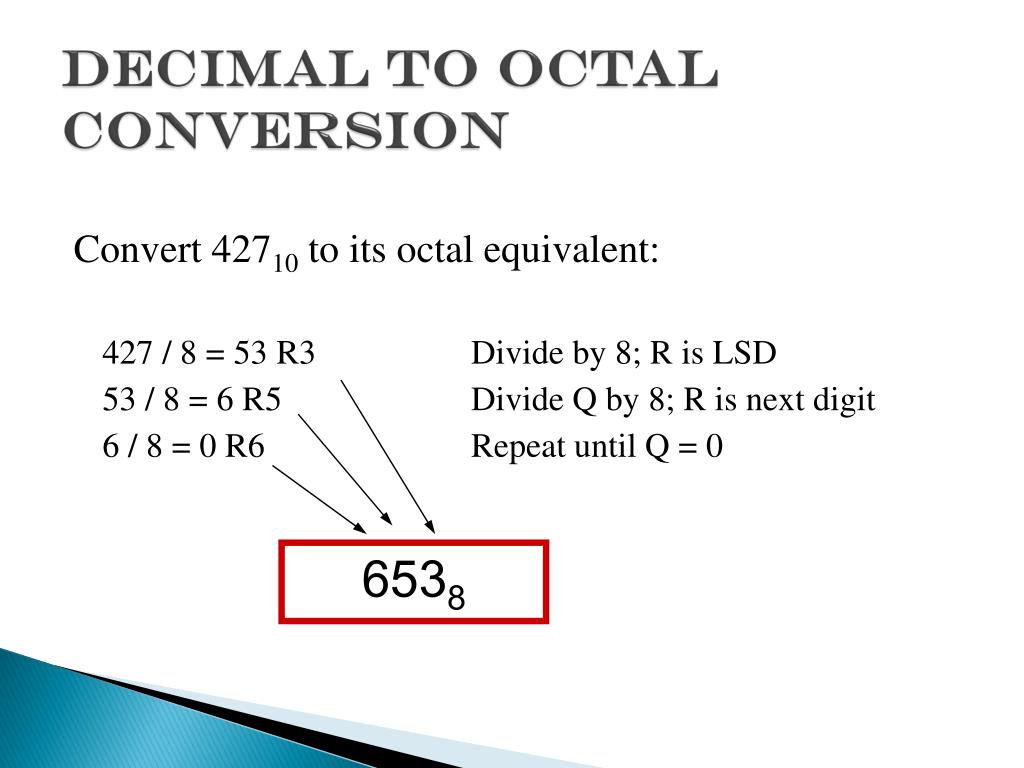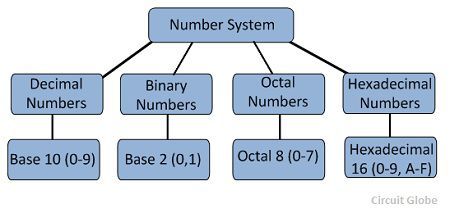Number System Presentation
| Introduction to Number Systems | ||
|---|---|---|
| Number system is a way to represent, organize, and manipulate numbers. Different cultures and civilizations have developed their own number systems throughout history. The most commonly used number systems today are decimal, binary, octal, and hexadecimal. | ||
| 1 | ||
| Decimal Number System | ||
|---|---|---|
| The decimal number system, also known as base-10, uses 10 digits (0-9) to represent numbers. Each digit's value is determined by its position in the number. Decimal numbers can be expanded to include a decimal point and fractional values. | ||
| 2 | ||
| Binary Number System | ||
|---|---|---|
| The binary number system, also known as base-2, uses only two digits (0 and 1) to represent numbers. Each digit's value is determined by its position in the number, starting from the rightmost digit. Binary numbers are widely used in computer science and digital electronics. | ||
| 3 | ||
| Octal Number System | ||
|---|---|---|
| The octal number system, also known as base-8, uses eight digits (0-7) to represent numbers. Each digit's value is determined by its position in the number. Octal numbers are sometimes used in computer programming and Unix system permissions. | ||
| 4 | ||
| Hexadecimal Number System | ||
|---|---|---|
| The hexadecimal number system, also known as base-16, uses sixteen digits (0-9 and A-F) to represent numbers. Each digit's value is determined by its position in the number. Hexadecimal numbers are commonly used in computer programming, particularly for representing memory addresses and color codes. | ||
| 5 | ||
| Conversion between Number Systems | ||
|---|---|---|
| Converting between number systems involves changing the representation of a number from one base to another. Decimal to binary conversion involves repeated division by 2 and noting the remainders. Binary to decimal conversion involves multiplying each digit by the corresponding power of 2 and summing the results. | ||
| 6 | ||
| Conversion between Number Systems (continued) | ||
|---|---|---|
| Decimal to octal conversion involves repeated division by 8 and noting the remainders. Octal to decimal conversion involves multiplying each digit by the corresponding power of 8 and summing the results. Hexadecimal to decimal conversion involves multiplying each digit by the corresponding power of 16 and summing the results. | ||
| 7 | ||
| Conversion between Number Systems (continued) | ||
|---|---|---|
| Binary to octal conversion can be done by grouping binary digits into sets of three and converting each set to its octal equivalent. Octal to binary conversion involves converting each octal digit to its binary equivalent. Hexadecimal to binary conversion involves converting each hexadecimal digit to its binary equivalent. | ||
| 8 | ||
| Importance and Applications of Number Systems | ||
|---|---|---|
| Number systems are fundamental to mathematics, computer science, and digital electronics. They enable efficient representation and manipulation of numbers and data. Understanding number systems is crucial for programming, data analysis, and other technical fields. | ||
| 9 | ||
| Summary | ||
|---|---|---|
| Number systems are ways to represent, organize, and manipulate numbers. Decimal, binary, octal, and hexadecimal are commonly used number systems. Conversion between number systems involves changing the representation of a number from one base to another. | ||
| 10 | ||
